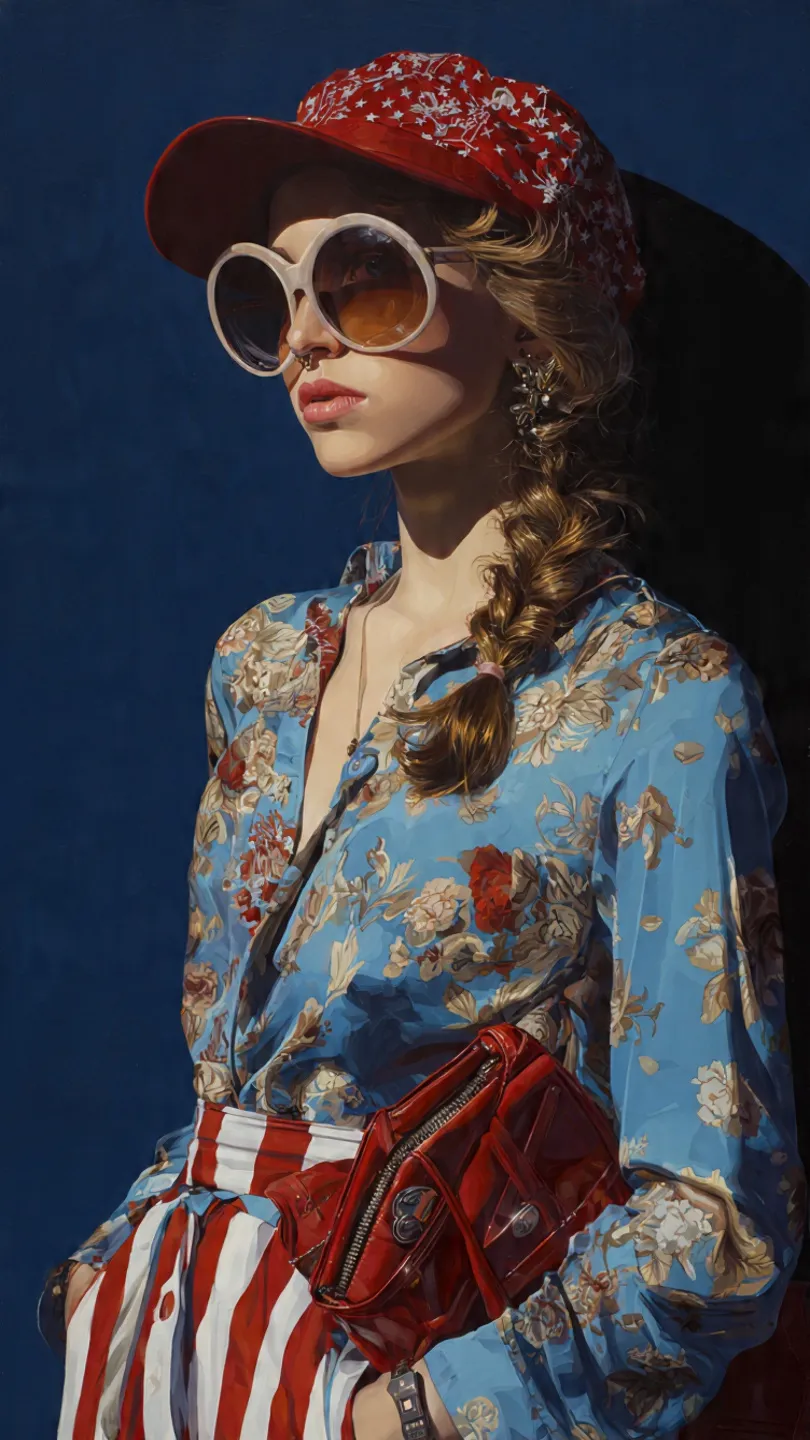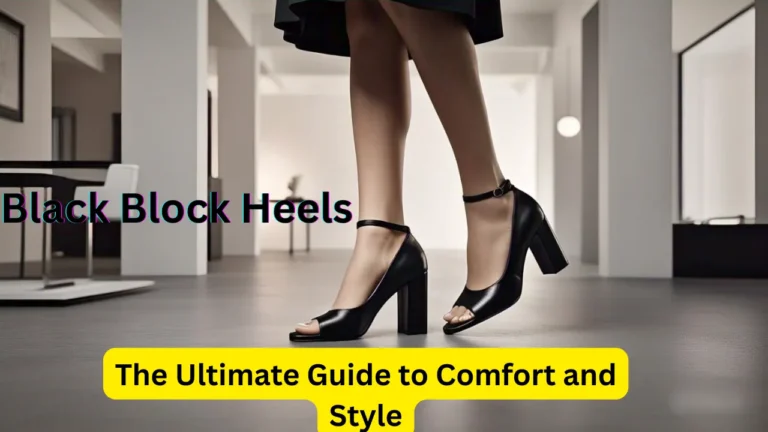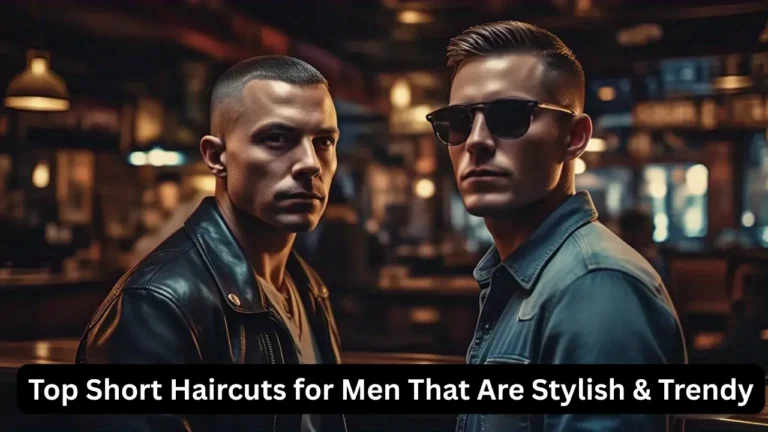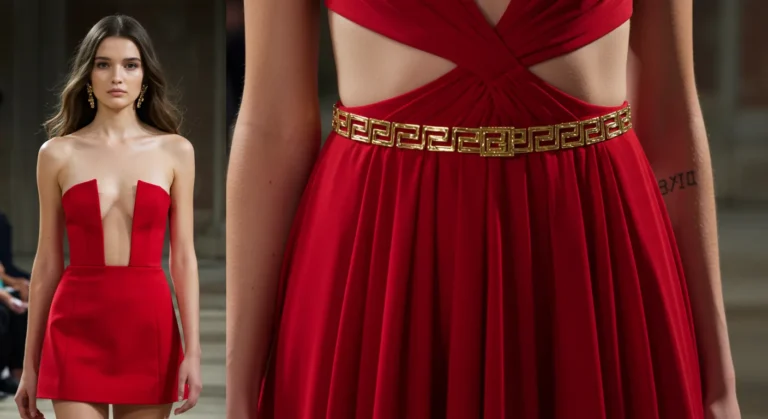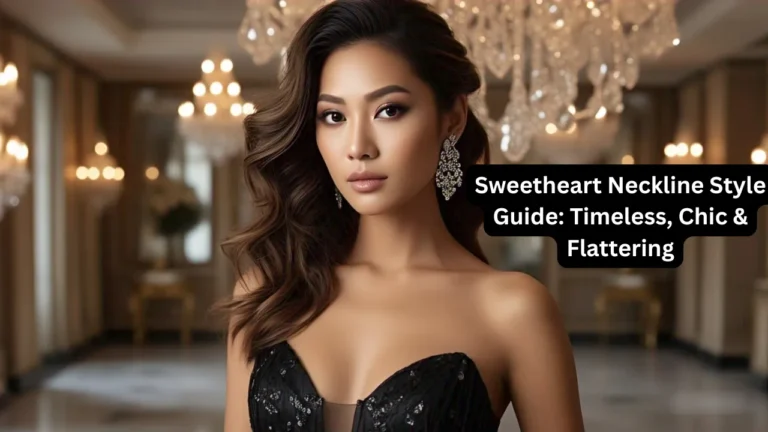best American Fashion 2025 The Modern Evolution of Style
Introduction
American fashion has always been more than fabric, stitching, or seasonal trends — it’s a reflection of freedom, individuality, and cultural evolution. From the roaring streets of New York to the laid-back vibes of California, American style captures the very soul of self-expression. In 2025, this unique blend of creativity and confidence continues to redefine how the world perceives fashion — bold, diverse, and unapologetically authentic. The story of American fashion isn’t just about clothes; it’s about people, innovation, and a lifestyle that celebrates every shape, color, and identity.
Unlike the traditional elegance of European couture, American fashion thrives on versatility. It fuses streetwear with sophistication, vintage nostalgia with futuristic design, and minimalism with maximalist energy. It’s a place where denim meets silk, sneakers pair with power suits, and individuality reigns supreme. This freedom of choice has turned American fashion into a global force — shaping industries, inspiring influencers, and rewriting the rulebook for what it means to be stylish in a modern world.
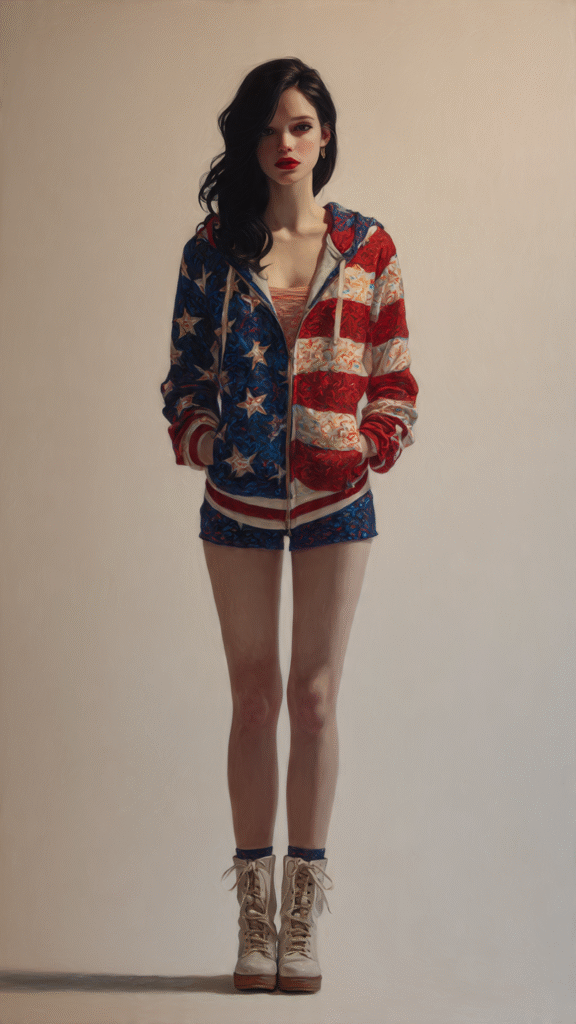
In 2025, the conversation around fashion in America goes far beyond aesthetics. Sustainability, inclusivity, and digital innovation now lead the runway. Designers are embracing eco-conscious materials, AI-driven design concepts, and gender-fluid collections that reflect a society constantly evolving toward openness and awareness. The line between luxury and accessibility is blurring, giving rise to new forms of “everyday elegance” that feel both premium and personal.
American fashion today is a mirror of its culture — powerful, progressive, and full of personality. It’s a style movement that transcends trends and generations, constantly reinventing itself to stay ahead of time. Whether it’s the effortless cool of Los Angeles, the edgy sophistication of New York, or the sustainable charm of Portland, every corner of the United States contributes its own story to this dynamic fashion narrative.
The Roots of American Fashion
The foundation of American fashion is a story woven through centuries of cultural fusion, rebellion, and reinvention. Long before it became a global powerhouse, American style was about practicality, individuality, and breaking free from European traditions. In the early 1900s, American designers began crafting clothing that suited the modern lifestyle — functional, comfortable, and confident. Icons like Claire McCardell redefined women’s fashion with easy-to-wear silhouettes, while brands like Levi Strauss transformed workwear into everyday essentials, giving birth to the world’s most iconic denim culture.
The 1950s and ’60s brought a wave of optimism and innovation. Hollywood played a major role, turning stars like Marilyn Monroe, Audrey Hepburn, and James Dean into timeless fashion symbols. Their looks — the classic white dress, tailored suit, and blue jeans — embodied a distinctly American aesthetic that blended glamour with realism. It was fashion for everyone, not just the elite. This era also marked the birth of mass production, making style accessible to a wider audience and establishing America as a hub of creativity and commerce.
As the decades rolled forward, American fashion continued to evolve with society itself. The 1970s saw the rise of bohemian freedom, disco sparkle, and experimental textures. The 1980s roared with power dressing, neon, and bold individuality. By the 1990s and 2000s, minimalism and streetwear began to dominate — proving that simplicity and authenticity were the new luxury. What remained constant was America’s ability to reflect cultural shifts through its clothing, blending diversity, innovation, and the fearless pursuit of self-expression.
Today, those roots still shape every collection on the runway. The legacy of American fashion is one of empowerment — dressing not just the body, but the spirit. It’s a story of evolution that continues to inspire global trends, reminding the world that style in America is not dictated by rules but defined by freedom.
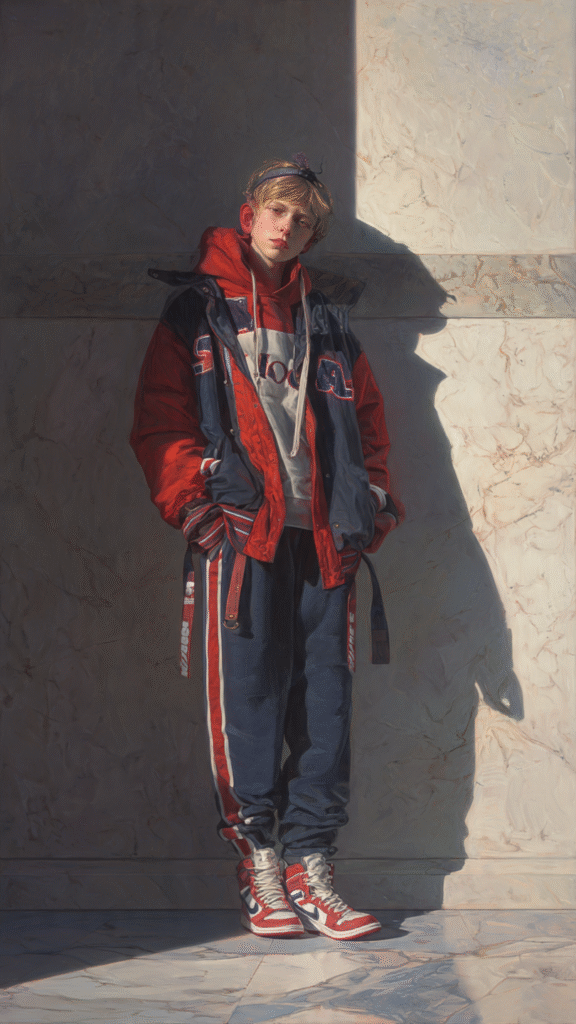
Modern American Fashion Trends 2025
In 2025, American fashion stands at the intersection of technology, sustainability, and individuality. Modern consumers no longer chase labels — they seek identity, meaning, and authenticity. This shift has pushed designers to innovate like never before, merging classic aesthetics with futuristic ideas. From AI-assisted design tools to zero-waste textiles, the industry is redefining what it means to create fashion responsibly and intelligently.
One of the biggest trends this year is eco-luxury — fashion that looks high-end but feels ethical. Sustainable fabrics like organic cotton, recycled nylon, and plant-based leather dominate collections from coast to coast. American designers are leading the movement toward transparency, creating pieces that not only turn heads but also protect the planet. Brands like Reformation, Patagonia, and Stella McCartney (in her U.S. line) set the standard for eco-chic, blending conscience with couture.
Another major trend defining 2025 is gender-fluid fashion. Gone are the days when clothing was confined by gender labels. Modern American fashion celebrates individuality and inclusivity — where silhouettes, colors, and textures belong to everyone. Unisex blazers, oversized fits, and minimalist aesthetics are now at the heart of American wardrobes. Influencers and celebrities are embracing this freedom, turning red carpets into platforms for diversity and expression.
Digital fashion has also exploded in popularity. Virtual wardrobes, AI-generated designs, and augmented reality shopping experiences are reshaping how Americans buy and wear clothes. Consumers can now try on outfits through AR mirrors or even own digital fashion NFTs for social media avatars — proving that the line between reality and technology is thinner than ever.
But despite these futuristic trends, American fashion in 2025 still holds onto its roots — freedom, functionality, and personality. Whether it’s a hand-crafted denim jacket, a minimalist suit, or a pair of vintage sneakers, every piece tells a story of creativity and character. The message is clear: fashion in America is no longer about fitting in — it’s about standing out with purpose.
Top American Fashion Brands
The fashion landscape in America thrives because of its visionary brands — each representing a unique facet of the nation’s identity. From luxury houses to streetwear innovators, these labels shape global trends and influence how people define modern style.
At the forefront is Ralph Lauren, the timeless embodiment of American elegance. For decades, the brand has symbolized aspiration, class, and heritage — blending preppy sophistication with effortless charm. Meanwhile, Calvin Klein continues to dominate minimalist design, emphasizing clean lines and quiet confidence. Their campaigns redefine sensuality and simplicity, capturing the essence of American cool.
Then there’s Tom Ford, whose bold designs fuse Hollywood glamour with sharp tailoring. His work embodies the intersection of power and allure — a theme that resonates deeply with both the business elite and creative minds. On the streetwear front, Supreme and Off-White redefine youth culture, turning urban fashion into global art. Their collaborations blur the line between luxury and everyday wear, making sneakers, hoodies, and accessories symbols of individuality.
Sustainability-driven brands like Reformation, Everlane, and Allbirds are also reshaping consumer values. Their commitment to ethical production and transparency appeals to a generation that values meaning over labels. Similarly, The Row, founded by Mary-Kate and Ashley Olsen, champions quiet luxury — a minimalist movement that’s all about quality, texture, and timeless craftsmanship.
Emerging designers like Telfar Clemens, Christopher John Rogers, and Brandon Blackwood represent the new wave of American creativity — diverse, bold, and unapologetically innovative. Their designs amplify voices often underrepresented in fashion while redefining luxury through inclusivity and authenticity.
Together, these brands represent the true power of American fashion — its ability to evolve, inspire, and lead. Each name tells a different story, yet they all share the same mission: to make style accessible, expressive, and unmistakably American.
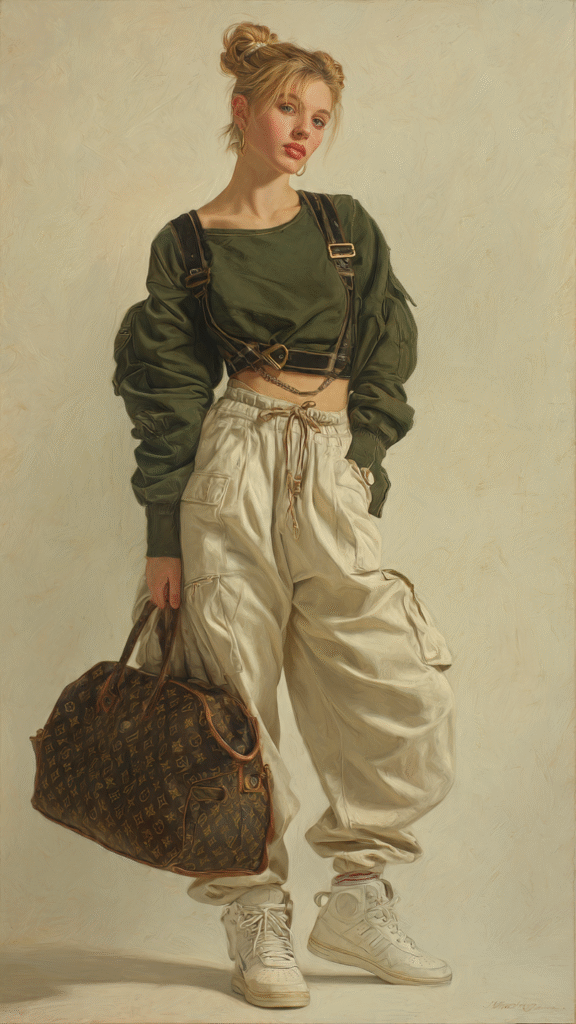
Streetwear, Sustainability
The future of American fashion is being written on the streets, in digital studios, and through sustainable innovation. Streetwear — once considered a subculture — now defines the mainstream. It’s the language of a new generation that values comfort, authenticity, and creativity over perfection. From Los Angeles to New York, streetwear represents the pulse of modern America, blending art, music, and social expression into wearable culture.
In 2025, sustainability is no longer optional; it’s essential. American designers are leading a green revolution with biodegradable fabrics, circular production models, and digital pattern-making that reduces waste. The rise of “slow fashion” encourages consumers to buy less but better, focusing on longevity and craftsmanship. This shift reflects a growing awareness that true luxury lies in responsibility — not excess.
Technology continues to accelerate fashion’s evolution. AI is now predicting trends, customizing fits, and even co-designing with humans. Virtual fashion shows, metaverse collections, and 3D sampling are transforming how brands connect with audiences. For consumers, it means personalized experiences, faster production cycles, and limitless creativity — all while staying eco-conscious.
Inclusivity is another cornerstone of American fashion’s future. Body diversity, cultural representation, and gender inclusivity are no longer trends but standards. Brands that embrace these values are thriving, proving that empathy and innovation can coexist beautifully.
Looking ahead, American fashion will continue to set global benchmarks for progress and creativity. It’s an industry unafraid to break boundaries — a living testament to freedom, reinvention, and artistic courage. Whether on a digital runway or a downtown sidewalk, the future of fashion in America belongs to those who dare to redefine it.
The Role of Technology in American Fashion
Technology has become the heartbeat of American fashion in 2025, redefining everything from design and production to consumer experience. What was once a creative art form guided by intuition is now equally powered by innovation, data, and digital intelligence. American designers and brands are embracing technology not as a tool, but as a creative partner — transforming fashion into a fusion of craftsmanship and computation.
One of the most transformative developments is Artificial Intelligence (AI) in fashion design. AI algorithms can now predict style trends, analyze color palettes, and even assist in creating virtual prototypes long before fabrics are cut. Brands like Tommy Hilfiger and Nike are using predictive analytics to understand consumer preferences, ensuring that every design resonates with market demand. AI doesn’t just speed up creativity; it personalizes it — turning fashion into an intimate dialogue between designer and wearer.
Another breakthrough is 3D design and digital sampling, which have revolutionized how garments are produced. Instead of wasteful trial-and-error, designers can now visualize entire collections digitally, reducing fabric waste and production time. Tools like CLO 3D and Browzwear allow American fashion houses to simulate fabric movement and drape — blending technology with artistry in breathtaking ways.
Meanwhile, the rise of augmented reality (AR) and virtual reality (VR) is reshaping how consumers shop. From trying on outfits in digital mirrors to attending metaverse fashion shows, technology is making style immersive and accessible. Brands are no longer bound by physical runways; they’re building digital worlds where creativity has no limits.
Sustainability is also deeply intertwined with technology. Blockchain, for example, ensures transparency in supply chains — allowing consumers to trace the origin of their garments and verify ethical practices. This tech-driven accountability builds trust and supports the new wave of conscious consumerism sweeping through America.
In short, technology is not replacing creativity — it’s amplifying it. American fashion’s tech revolution proves that innovation and artistry can coexist harmoniously. The future belongs to those who dare to combine code with couture, turning imagination into intelligent design.
Diversity and Cultural Influence
At the heart of American fashion lies one of its greatest strengths — diversity. No other fashion culture in the world draws inspiration from such a wide spectrum of backgrounds, ethnicities, and traditions. This melting pot of creativity has made the U.S. not just a fashion hub, but a global trendsetter built on inclusion, authenticity, and cultural storytelling.
From the Harlem Renaissance to the rise of streetwear, American fashion has always reflected the voice of the people. Every era, every movement, every cultural shift has found expression through clothing. In 2025, this influence continues to thrive, driven by designers and creators who celebrate heritage and individuality. Names like Telfar Clemens, Prabal Gurung, and Aurora James are redefining what it means to be an “American designer” — embracing multicultural influences while shaping modern style.
Diversity in American fashion isn’t limited to ethnicity — it’s also about body positivity, gender expression, and accessibility. Brands are finally moving away from outdated beauty standards to showcase real people, real stories, and real confidence. Fashion weeks now feature models of all body types, ages, and abilities, marking a historic shift toward genuine representation. This inclusivity isn’t a marketing trend; it’s a cultural awakening that mirrors the values of a new generation.
Social media has amplified these voices. Platforms like Instagram, TikTok, and Threads have given independent creators, stylists, and influencers a stage to celebrate personal identity. From Indigenous beadwork to Afro-futurist design, these stories are shaping the next chapter of American fashion — one that honors tradition while championing innovation.
Ultimately, diversity isn’t just a feature of American fashion — it’s its foundation. The strength of this industry lies in its ability to embrace difference, adapt to change, and evolve with empathy. Each collection, each collaboration, and each creative voice adds to a powerful narrative: that fashion in America is for everyone, and everyone has a place on its runway.
The Global Impact of American Fashion
American fashion has not only shaped national identity — it has left an indelible mark on the global stage. From the jeans that became a symbol of freedom to the streetwear that dominates cities worldwide, U.S. style has influenced how the world dresses, thinks, and expresses itself. The appeal of American fashion lies in its versatility — it speaks to aspiration, rebellion, and authenticity all at once.
In 2025, this global influence is more powerful than ever. American brands continue to set trends that ripple across continents. Hollywood’s red carpets dictate international style choices; New York Fashion Week remains a global beacon of creativity and innovation. Designers like Marc Jacobs, Virgil Abloh (whose legacy continues to inspire), and Tory Burch have helped solidify the U.S. as the epicenter of modern creativity.
But beyond glamour, the export of American values — freedom, diversity, sustainability — has redefined global fashion ethics. Countries look to the U.S. for leadership not only in aesthetics but in moral direction. American fashion’s push toward sustainable materials, fair labor, and inclusive representation has sparked global reform, urging other nations to rethink production and ethics.
American streetwear, once an underground culture, is now a universal language of style. From Tokyo to Paris, sneakers, hoodies, and denim jackets inspired by U.S. subcultures dominate urban wardrobes. The casual confidence of American fashion — relaxed yet expressive — has become the world’s favorite form of self-expression.
Technology has further amplified this reach. With eCommerce, digital marketing, and influencer collaborations, American designers can connect with global audiences instantly. Social platforms turn every launch into an international event, every trend into a global movement.
In essence, American fashion is no longer just a national industry — it’s a cultural export of creativity, confidence, and freedom. Its influence is woven into global wardrobes, shaping how people express individuality in every corner of the world. As 2025 unfolds, one thing remains undeniable: the world doesn’t just follow American fashion — it feels it.
FAQs
What makes American fashion unique?
American fashion is defined by its diversity, creativity, and adaptability. Unlike many global fashion cultures that follow strict traditions, American style embraces individuality.
Who are the most influential American fashion designers today?
Some of the most influential American designers in 2025 include Tom Ford, Telfar Clemens, Ralph Lauren, Brandon Maxwell, and Aurora James.
What are the biggest American fashion trends in 2025?
The top American fashion trends of 2025 focus on sustainability, gender-neutral designs, digital fashion, and quiet luxury. Eco-friendly materials, AI-assisted tailoring, and minimalist aesthetics dominate both runways and streetwear scenes.
How has technology changed American fashion?
Technology has completely revolutionized American fashion. Designers now use AI, 3D modeling, and virtual reality to create and test collections before production. Shoppers experience AR try-ons and personalized recommendations through digital stores.
Is American fashion sustainable?
Yes — sustainability has become a core value in American fashion. Brands are investing in recycled fabrics, ethical production, and circular fashion systems to reduce waste.
Conclusion
American fashion stands today as one of the most powerful reflections of identity, innovation, and cultural evolution. From its humble beginnings rooted in practicality to its modern dominance defined by sustainability, diversity, and technology, it continues to lead the world with fearless creativity. What makes American fashion truly remarkable is its ability to blend authenticity with ambition — transforming everyday style into a global language of confidence and individuality.
In 2025, the industry is no longer about following trends; it’s about setting them with purpose. The fusion of technology and sustainability has reshaped how Americans design, produce, and consume clothing. AI-driven fashion forecasting, eco-conscious materials, and digital experiences are no longer futuristic concepts — they are the foundation of how modern fashion operates. This progressive mindset keeps the United States ahead of the global curve, constantly redefining what it means to be stylish in a responsible, forward-thinking way.
Equally, the spirit of inclusivity has become the heartbeat of American fashion. Every designer, brand, and influencer contributes to a narrative of empowerment — one where every voice, shape, and story belongs. This human-centered approach has elevated the U.S. fashion industry beyond aesthetics, turning it into a movement of values, vision, and impact.
As the global fashion stage evolves, one truth endures: American fashion isn’t just about what we wear — it’s about who we are. It celebrates individuality while inspiring unity, blending freedom with sophistication, and transforming culture into style. In every fabric, every silhouette, and every digital design, America continues to weave its legacy — bold, beautiful, and timeless.

